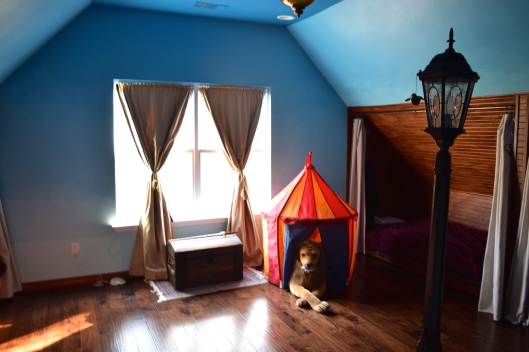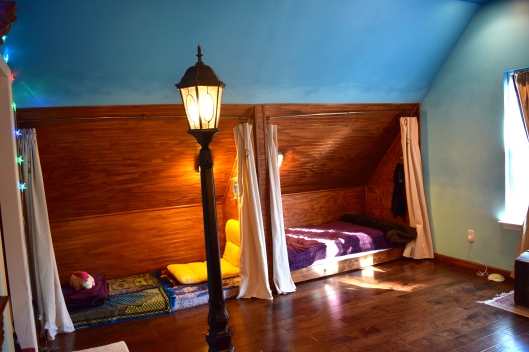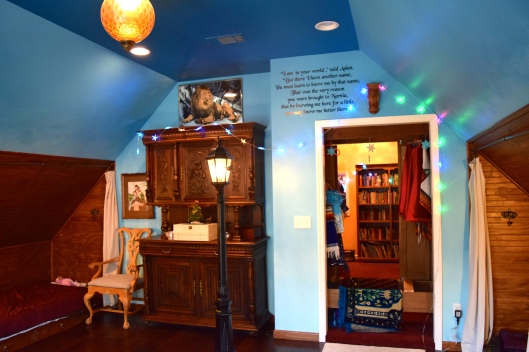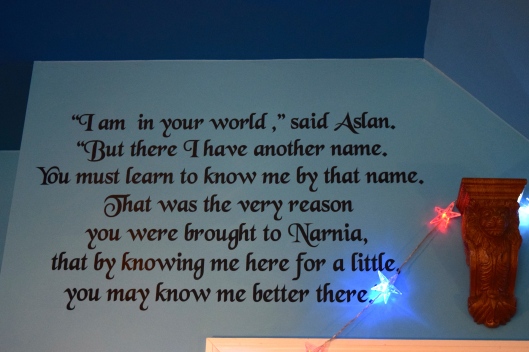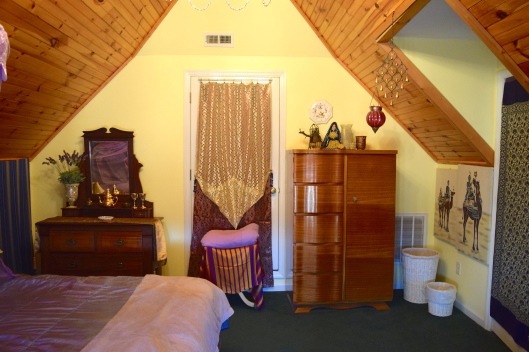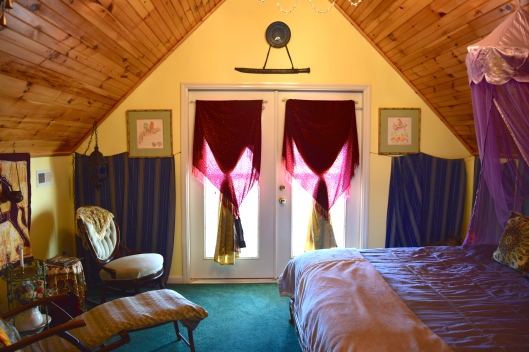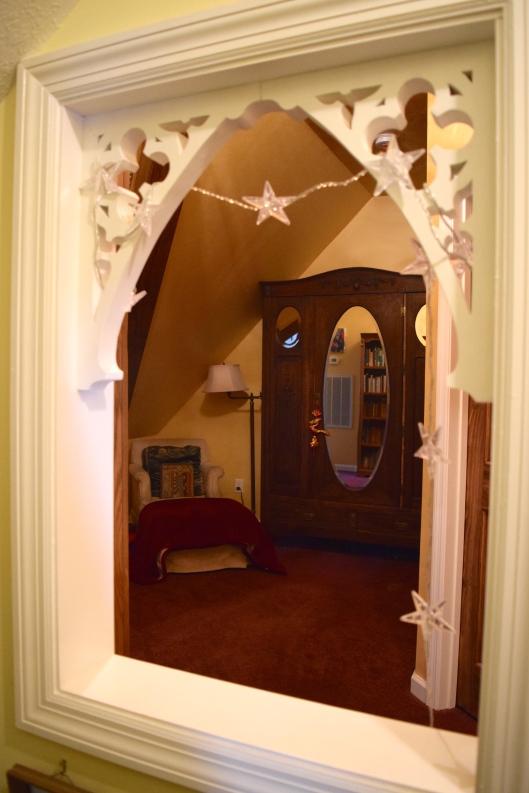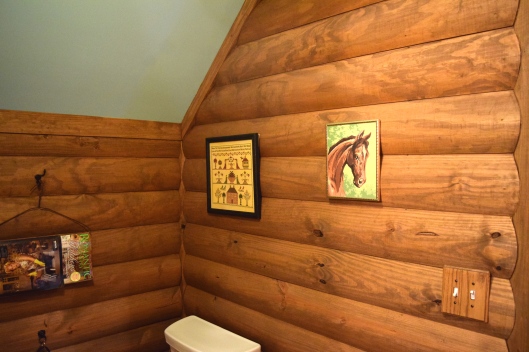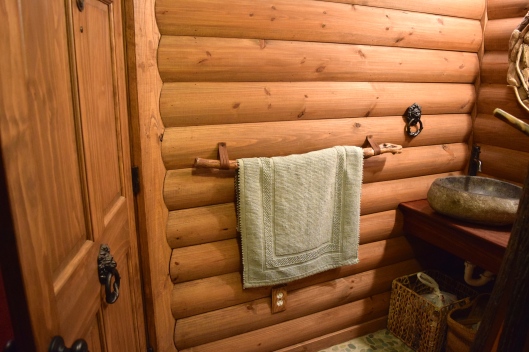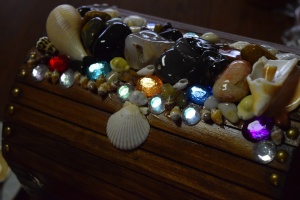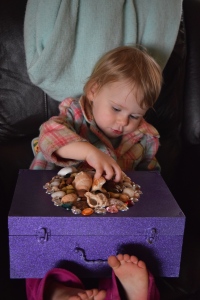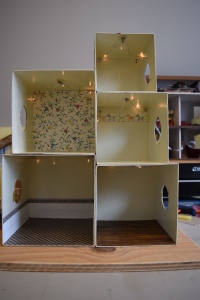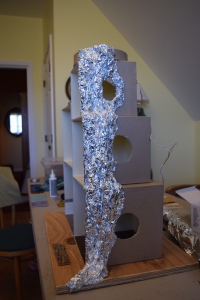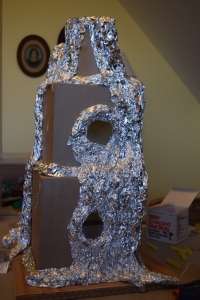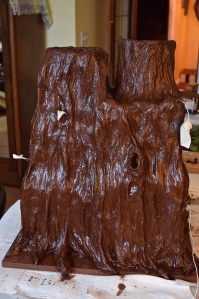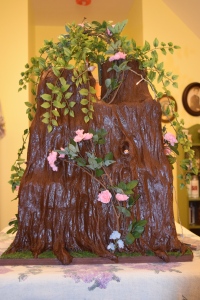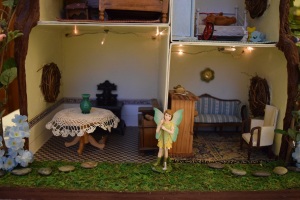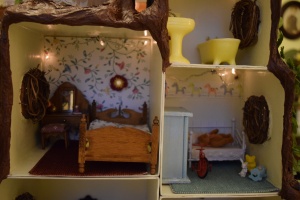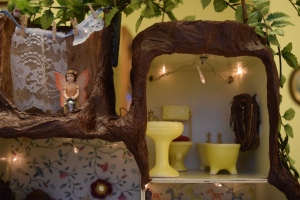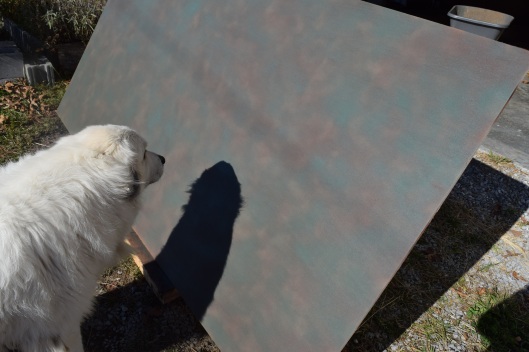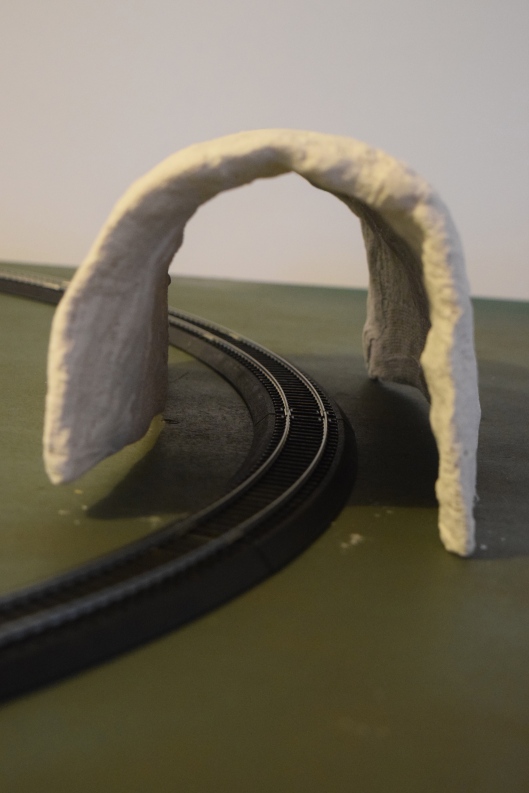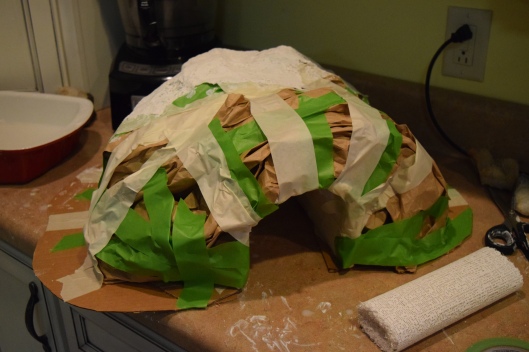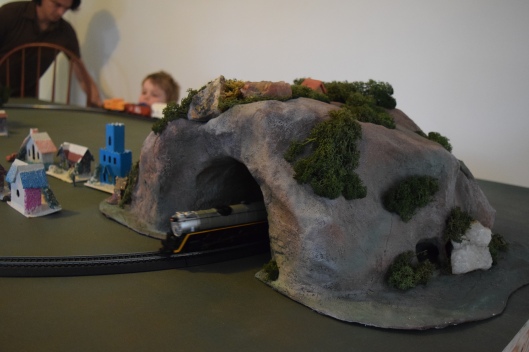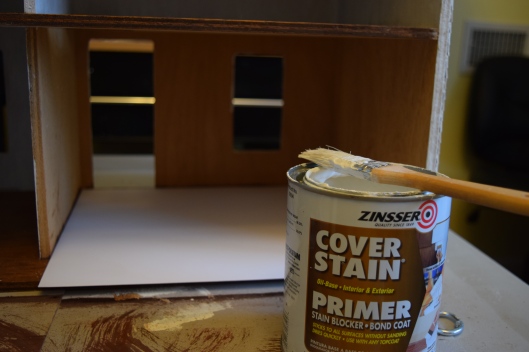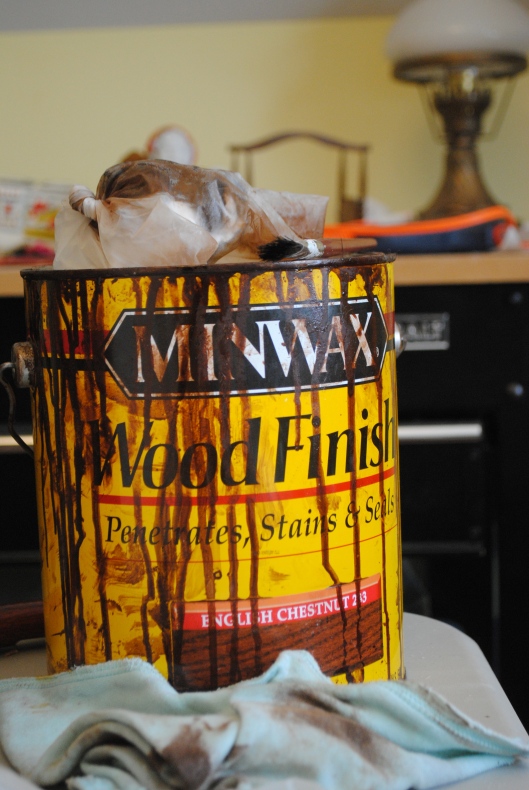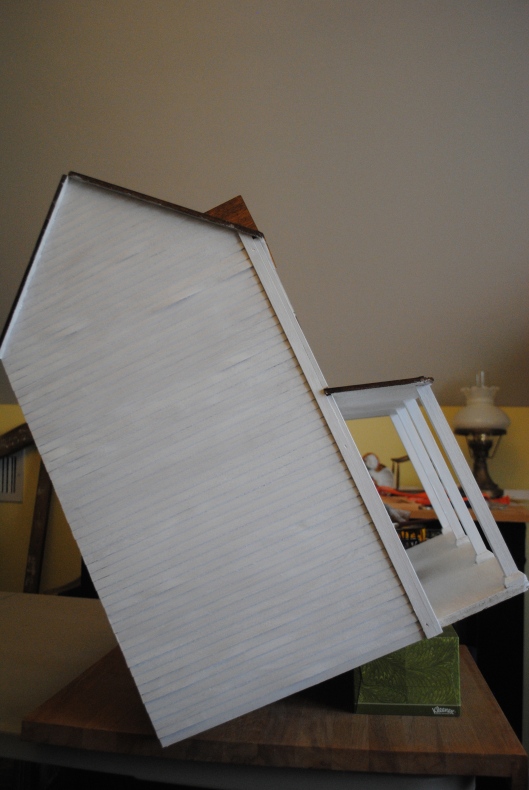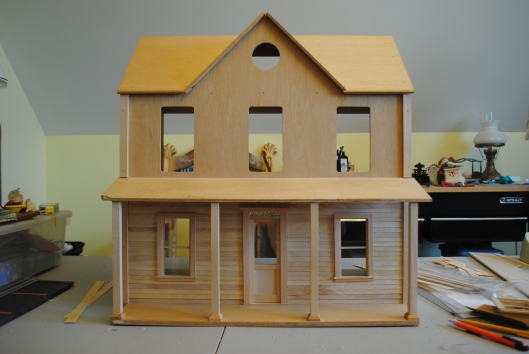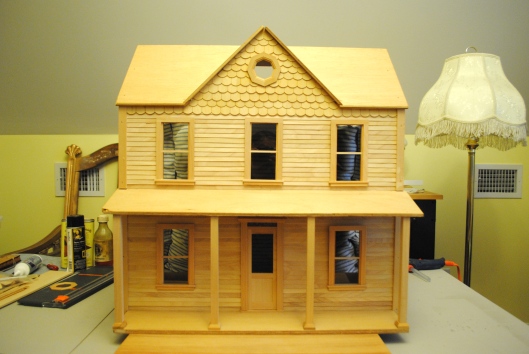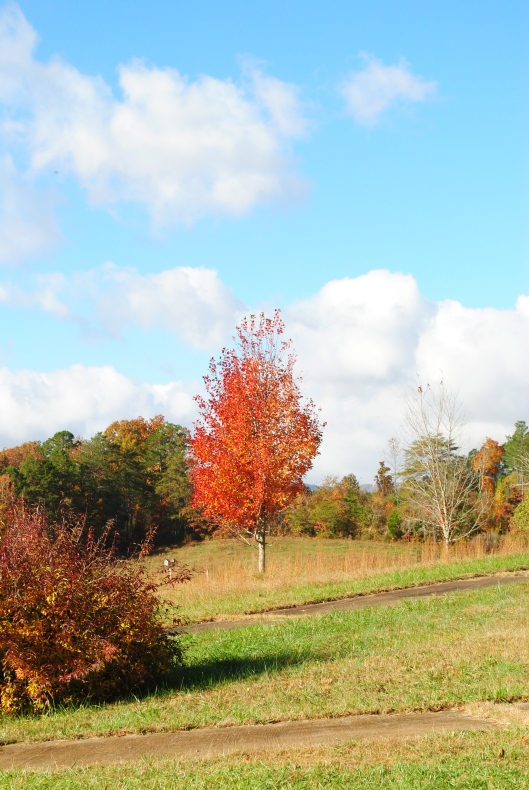It’s been three months since I worked on the dollhouse. Since the last post about the ripples that appeared after I painted the siding, things got even worse as the paint dried. I was so discouraged that I just didn’t know what to do, so I did . . . nothing! But poor little Charis is longing to play with the dollhouse, so I just had to get back to it.
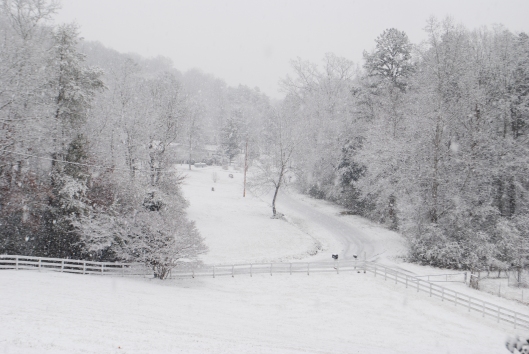 Yesterday it snowed and again today, so it seemed like a good time to get to work.
Yesterday it snowed and again today, so it seemed like a good time to get to work.
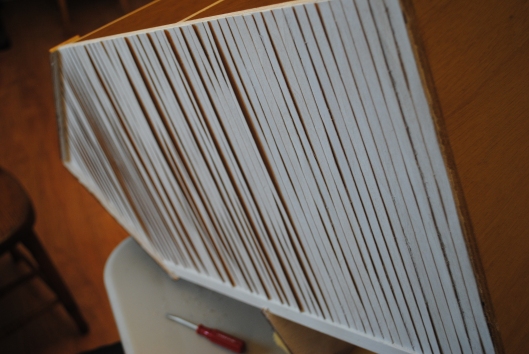 You can see what a mess I had to work with. Here’s the solution I devised:
You can see what a mess I had to work with. Here’s the solution I devised:

I had already bought a mini hot glue gun, and I gathered some potentially useful tools to go with it: A plastic pot scraper, a small screwdriver, a paint can opener and a staple remover.
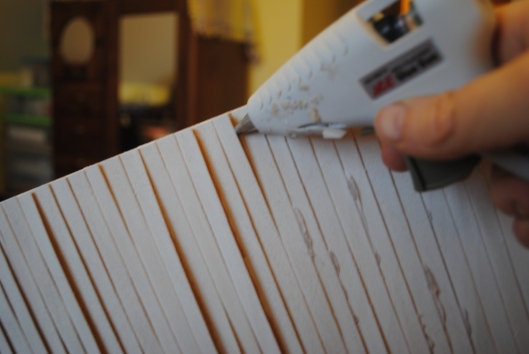
I began by inserting the tip of the hot glue gun into a crevice under a siding board and running one third to halfway along the board. Any more than that was too much to press down until the glue cooled.

Fingers were the first tool I used to press the glue down. The danger, of course, is coming in contact with the hot glue which is hot enough to blister skin. So I tried various other tools for the job:


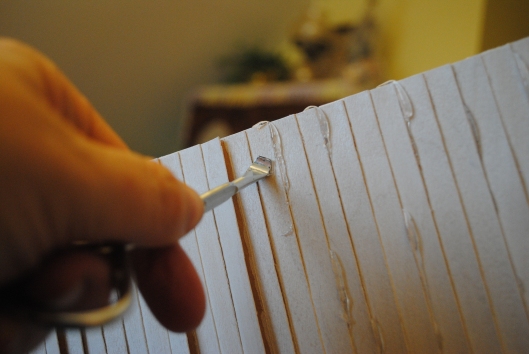

In the long run, the business end of the staple remover worked best.
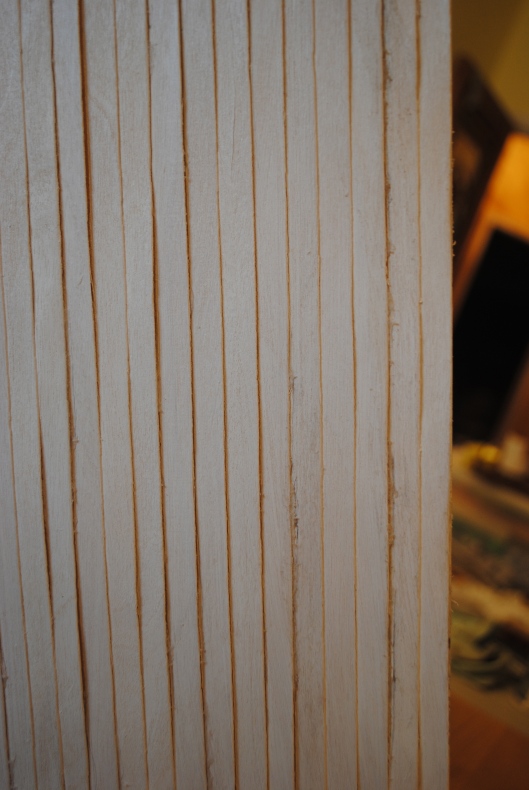
The first day I worked, I removed the excess glue as soon as it cooled enough to touch. This was not a good idea, as you can see from the photo above. Hot glue needs to cool completely before the excess is removed, or it is almost impossible to remove.

Here’s an experiment I did to prove the point: two blobs of hot glue on the plastic table, a surface that will be easier to clean than wood.

As soon as the glue cooled, I began to remove one blob.

Even when I managed to scrape it away with much effort, some still adhered to the table.

A couple hours later after the second blob had set, it peeled off easily without leaving a residue.

So when I finished gluing one side of the dollhouse, I LEFT IT ALONE!

I didn’t even pull off the temptingly fragile cobwebby strands that formed.

It looked really horrible, and it was VERY hard to leave it alone! But I did. I glued the second side and a bit of the front and then . . .

I unplugged my glue gun and went away overnight. Always, always unplug the glue gun, even if you think you are just leaving for a few minutes. You might get distracted doing something else and forget to return and unplug it.

When the snow turned to nasty freezing rain this afternoon, I was glad to head upstairs and begin carving excess glue off my siding. First I slipped an Exacto knife under the side of the glue and sliced it free from the siding.
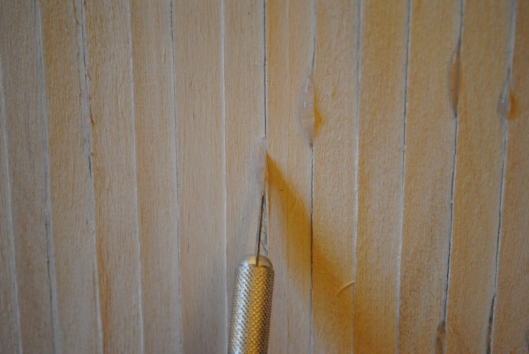
Next I held the knife vertically and sliced down to the siding. This was a very tedious job which I did with extreme care, both for my fingers and the fragile siding.

Once the glue was sliced loose, it was easy to peel it away. If there was any residue left, I found the small screwdriver extremely helpful in scraping it away. Sometimes a thumb nail worked well, too, but the screwdriver has the advantage of not getting sore!
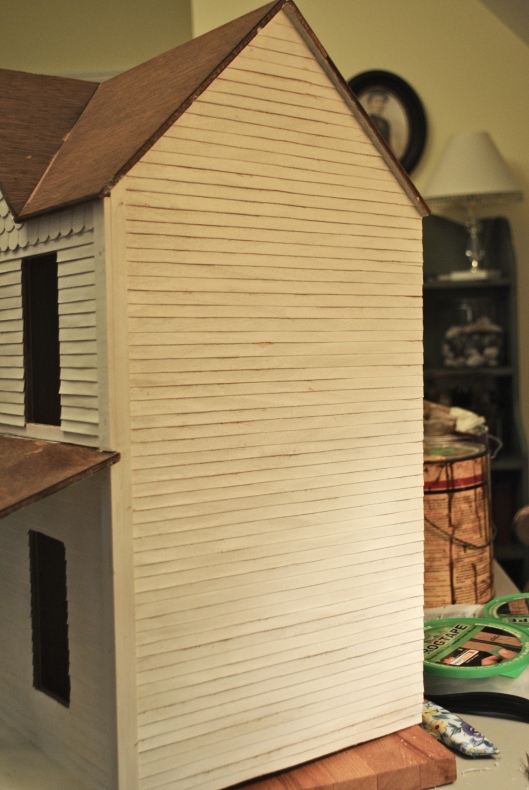
After several hours of steady labor, one side was finished. It doesn’t look near as good as it did before I painted the siding in the first place, but it’s a far sight better than what it looked like yesterday!

When I looked out the window I was astonished to see that the freezing rain had turned back into snow, which was falling heavily in giant flakes, creating a real winter wonderland outside. Although the evening light was really blue, I was personally feeling a whole lot less blue! It looks like the dollhouse and I might both come through the storm okay.


